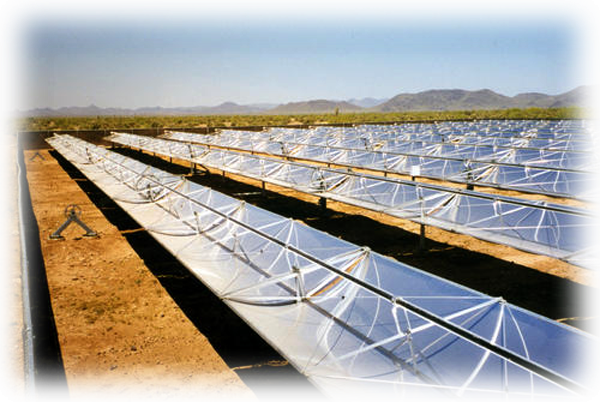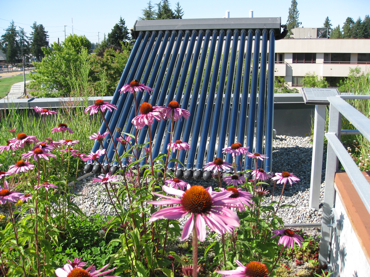Frenchtown High School
Live Solar Electric Generation
Biomass
Humans have used the energy from trees, grasses, agricultural crops or other biological material, since people began burning wood to cook food and keep warm.

Most biopower plants burn biomass directly to produce steam that drives a turbine, which, in turn, drives a generator that converts the mechanical energy into electricity. Some biopower technologies liquefy or gasify the biomass matter before burning it, while others capture and burn the methane (natural gas) that is produced from the decaying biomass at landfills, sewage treatment plants and animal feedlots.
Biopower is considered a “carbon-neutral” source of electricity because, even though carbon dioxide is released when biomass is burned, this release is largely nullified by the carbon dioxide captured during the growth of the biological material.
Wind Energy
A wind turbine system transforms the kinetic energy of the wind into electrical energy that can be harnessed for practical use.

Large, high-tech turbines, grouped into "wind farms" with generating capacities that range from a few megawatts to hundreds of megawatts, produce power that flows into the electricity grid.
While wind contributes less than 1% of the electricity generated in the U.S. today, installed capacity has been expanding at an average annual rate that exceeds 20%. In the early 1980s, when the first utility-scale turbines were installed, wind-generated electricity cost as much as 30 cents per kilowatt-hour. Now, some state-of-the-art wind power plants can generate electricity for less than 5 cents per kilowatt-hour, a price that is competitive with new coal and gas-fired power plants.
Solar Thermal
Solar Thermal systems use the sun to heat water. The steam from the boiling water then rotates large turbines, which activate generators that produce electricity.

Conventional power plants often employ the same principles, but these electrical generation facilities burn fossil fuels to heat the water, releasing harmful emissions in the process.
Though there are several versions of Solar Thermal technology, one type, Concentrating Solar Power Systems, uses large mirrors to concentrate the sun’s rays to produce steam, which then powers the traditional generator.
Geothermal
Geothermal energy has tremendous potential for producing electricity, by tapping into the "earth heat" that lies just beneath the surface of the earth.

About 8,000 megawatts (MW) of geothermal electricity are currently produced around the world, including about 2,800 MW of capacity in the United States. Today’s technology uses the steam from hydrothermal (hot water/steam) resources to turn turbines, which drive generators that generate electricity.
In the future, we may be able to produce electricity using the heat from the hot, dry rock formations of Earth’s crust, and possibly from the Earth’s magma, the molten rock deeper beneath the Earth’s surface.
Conservation and Technology
New ways of building and using buildings

By harnessing the energy from the sun, the solar thermal tubes on a Green Roof can provide hot water and reduce the use of electricity.
Solar photovoltaic panels can create electricity and provide shade to vehicles. Electric car charging stations and bike racks conserve natural resources and support greenhouse gas reduction. Occupancy sensor-controlled lights and heating/cooling system, building insulation that’s more than required by code, maximized natural lighting, and heat recovery & re-use all contribute to energy and financial savings.